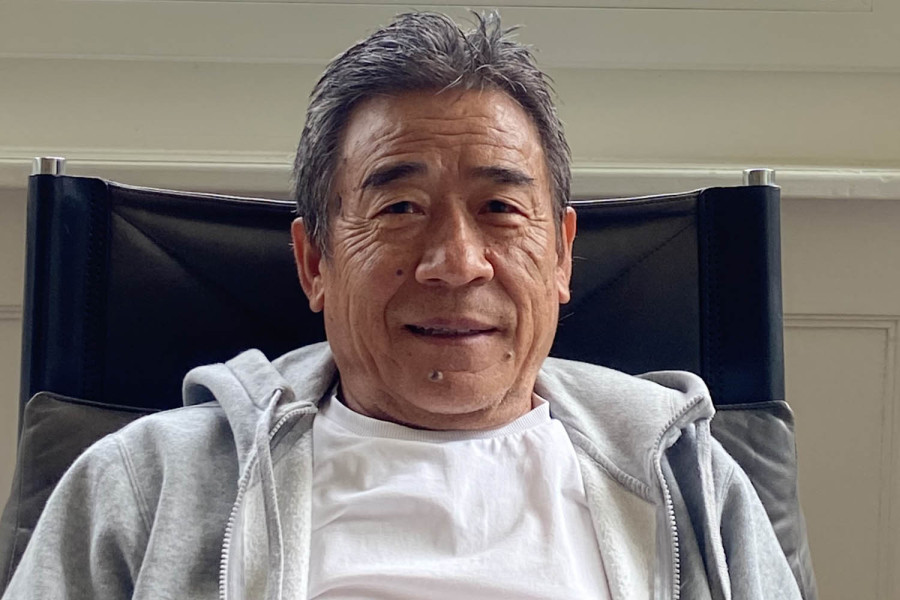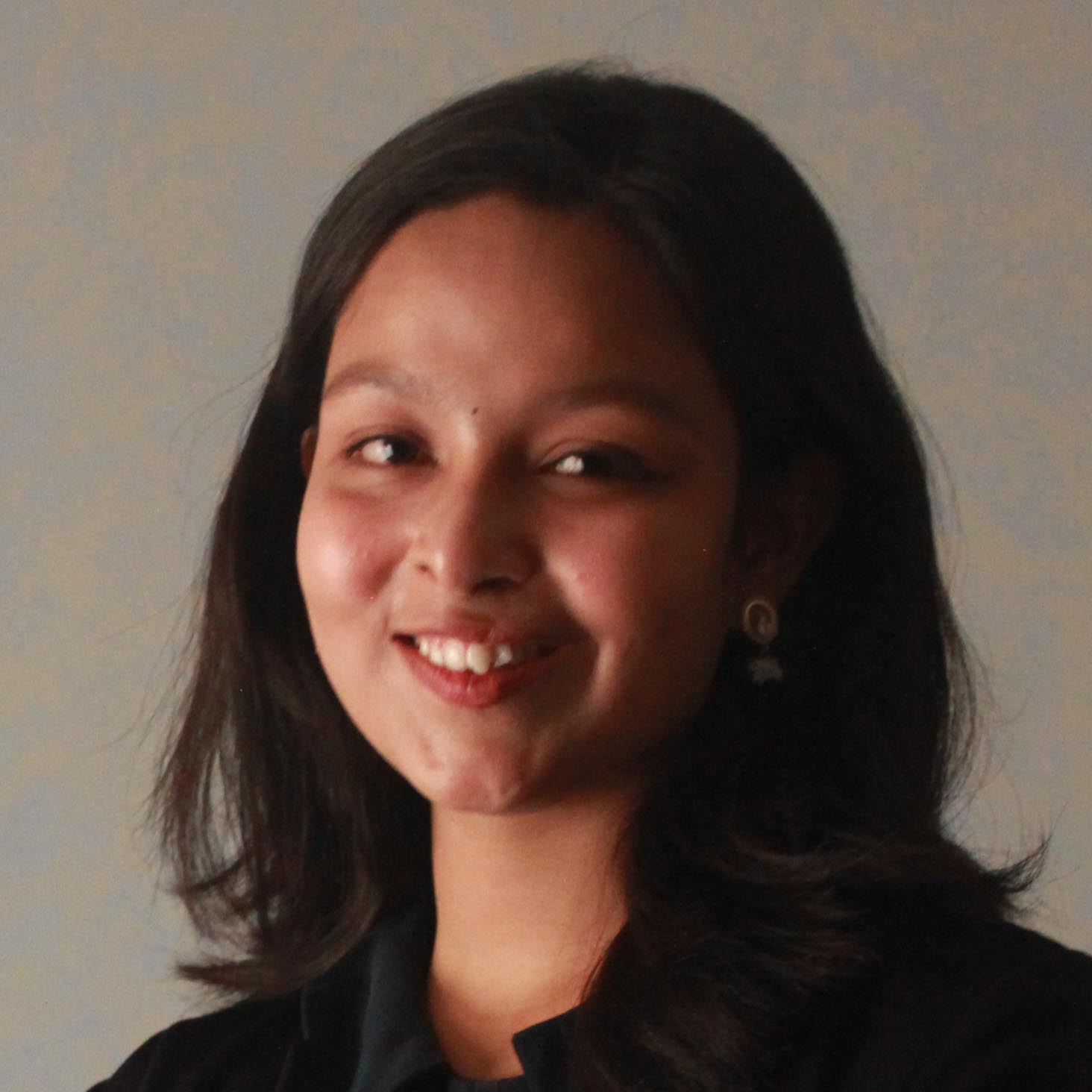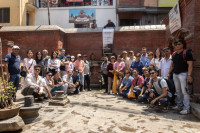Culture & Lifestyle
Powerful stories take time to unfold
Kesang Tseten, one of Nepal’s foremost filmmakers, reflects on his decades of experience making observational documentaries.
Rose Singh
Kesang Tseten is a Nepali documentary filmmaker whose films have been screened at numerous international film festivals, such as the International Documentary Film Festival of Amsterdam (IDFA), the Vienna International Film Festival, and the Mumbai International Film Festival. With 16 films under his name, some of which are ‘Hami Kuna Ko Manche’, ‘Who will be a Gurkha’, and ‘Castaway Man’, his love for telling stories has taken him to places all over the world.
Tseten started making films in 1997 at the age of 40. Before that, he had no prior experience in filmmaking. In the past, he worked as a freelance writer for Himal Magazine.
In this interview with the Post’s Rose Singh, Tseten talks about how he began making documentaries and what continues to inspire him to tell stories about the unique cultures and people of the country.
How did you get into filmmaking?
I trained as a journalist at Columbia University and always wanted to be a writer. I would write short stories, and I’ve even written a book which is yet to be published. I realised that writing isn’t essentially different from filmmaking because despite being different mediums, the core is the same, and that is to tell a story.
A friend working at International Centre for Integrated Mountain Development (ICIMOD) asked me to make a film about indigenous knowledge and technology. I set out to make a film about Lepcha people—an indigenous group in Sikkim and the Naga people (another indigenous group) in Nagaland, focusing mainly on their culture and livelihood. After that, Helvetas reached out to me to make a documentary on the Machhindranath Jatra. Two documentaries later, I began calling myself a filmmaker.
How do you choose the stories for your documentary?
Usually, an organisation approaches me with a project. But I also pitch my own ideas. However, the terms are the same—that I make my film independently and not as a public relations exercise for the organisation. Documentary filmmakers are often looking for a subject that stands out in some manner. For me, it is about finding a new story.
For ‘In Search of the Riyal,’ the idea wasn’t unique, but the end result was surprisingly powerful. I decided to film the experiences of five young migrant workers who were given training in scaffolding for seven weeks before departing for the Gulf.
Migration is pervasive in Nepal, and remittances contribute to 23 percent of the GDP. Thousands of people leave the country every year in search of a way of livelihood. While many think about migration in slogan terms—as slavery and exploitation only—I wanted to show that it is more complex than that. I eventually made five films about migrant workers (In Search of the Riyal, The Desert Eats Us, Saving Dolma, The Riyalists, and A Migrant Speaks).
With migration, the challenge was to make a film about an over-done topic in a nuanced way. I wanted to show that labour migration is more than just hopelessness and exploitation and ask: Where does the people’s agency to choose their own path fit into this narrative? Millions of people can’t all be fools; they must have good enough reasons to go, which is a different matter from the mistreatment and abuse they might suffer. People want an easy answer, but human lives are more complex.
What is your creative process like?
It’s a very open process, and I don’t have any preconceived notions. 99 percent of the time, a story takes shape as you go along exploring; you just need to know where to start.
Humans are complex and their stories take time to unfold. I am very careful not to give away the story to my characters as that could cause them to infer what I want and accommodate accordingly. The last thing you should urge your subjects is to be natural because when you ask them to be natural, you are asking them to act.
Your filmmaking style is observational. Why are you drawn to this method in particular?
I prefer to let people show me who they are and capture them in their natural environment instead of asking them to ‘tell’ me who they are. In ‘Who Will Be a Gurkha,’ I made a conscious shift towards embracing an observational approach and showing people as they go about trying to get recruited to the British army.
Although the film has interviews, the interview is not with the camera but with officers speaking to the aspiring recruits. So the film is in a purely observational form. Interviews are important, I prefer not to rely on them as it can often result in over-telling rather than showing. Films by Frederick Wiseman and the Maysle Brothers, eminent practitioners of observational filmmaking, have taught me that.
Filmmaking is also about patience. Sure, I want to connect and talk to my subjects. But a certain quality is uncovered when you quietly witness them in their everyday lives dealing with the conflicts they face on both social and personal levels. This isn’t something you can know by simply asking. Essentially, it’s not you who’s telling the story, it’s the people themselves. I do what I can to facilitate that.
My production company Shunyata Films is based on the core idea that there are multiple truths. The non-dualistic nature of human experiences is what fascinates me the most and is the philosophical basis of my work.
What are the struggles you have faced as a filmmaker?
I don’t think of filmmaking as a struggle because I made an active choice to do what I do. That makes the challenges worthwhile. I struggle only when I have to do something that isn’t fulfilling to me.
Sure, there are financial hassles but I am lucky my wife earns well. Finding institutions to support your film often feels like begging and I understand why many abandon their passion because there is no support system. There is frustration and dejection when you make a bad film and it is difficult to put your work out there for scrutiny.
During the making of ‘In Search of the Riyal,’ I had to follow the migrants to the countries they went to. I got a visa to go to Qatar and managed to locate two of the migrants I had been filming. When I got there, I realised that one can’t walk around with a camera, and they were very strict when it came to labour migrants.
I managed somehow. I had to take a small camera or film with my iPhone. Journalist Devendra Bhattarai helped me enormously. I couldn’t have made the film without his help.
While shooting ‘Hami Kuna ko Manche,’ the villagers in Rasuwa told me they converted to Christianity because it was less of an economic and social burden than observing shamanic customs which involved slaughter. It wasn’t my agenda to portray this, but how could I not show it? It was simply the reality we encountered. It was not up to me to pass judgement as to whether this change was good or bad. Many years later, they told me they converted back to Buddhism or shamanism because they didn’t ‘need’ Christianity. So all along, they seemed to know what they were doing and why.
There will always be difficulties and dilemmas when you make films. We just have to manoeuvre through them sincerely and carefully.




 6.94°C Kathmandu
6.94°C Kathmandu















